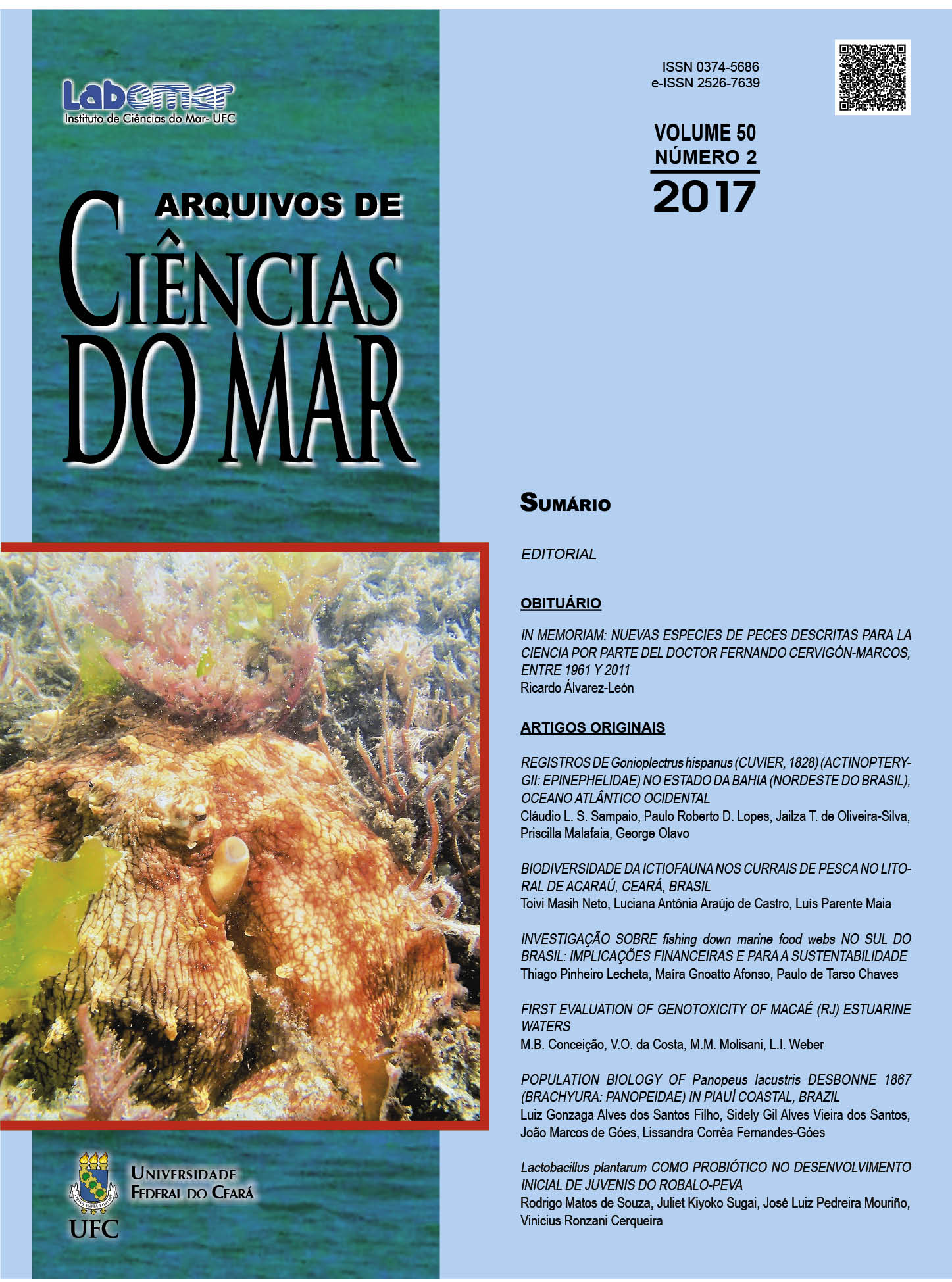The mollusk harvesting in intertidal environments on western Rio Grande do Norte State, Brazil
DOI:
https://doi.org/10.32360/acmar.v50i2.31150Keywords:
Clams, extractive activities, malacofauna, shellfishery, Bivalvia, Northeastern Brazil.Abstract
Molluscs are an important group extensively captured by fishing communities, however studies on their exploitation are still scarce in the Brazilian Northeastern. The present study aimed to record the malacofauna caught and traded on the west coast of the RN. Between the years of 2010 and 2013, 7 beaches of the region were sampled, where molluscs are harvested by artisanal fishey. Mollusc catchers were interviewed and the species collected by them were identified in situ. Nine mollusc species were identified, the bivalves were the most representative group. Some species are caught only for fishemen/fisherwomen own consumption, although most of them are traded for R$ 4.00 to 10.00 per kilogram. The fishery takes place throughout the year, except for the bivalve Mytella falcata that has its capture unviable during the rainy season. The octopus Octopus insularis and the oyster Crassostrea mangle (= Crassostrea rhizophorae) have the highest prices.
Downloads
Published
Issue
Section
License
1. Proposta de Política para Periódicos de Acesso Livre
Autores que publicam nesta revista concordam com os seguintes termos:
- Autores mantém os direitos autorais e concedem à revista o direito de primeira publicação, com o trabalho simultaneamente licenciado sob a Licença Creative Commons Attribution que permite o compartilhamento do trabalho com reconhecimento da autoria e publicação inicial nesta revista.
- Autores têm autorização para assumir contratos adicionais separadamente, para distribuição não-exclusiva da versão do trabalho publicada nesta revista (ex.: publicar em repositório institucional ou como capítulo de livro), com reconhecimento de autoria e publicação inicial nesta revista.
- Autores têm permissão e são estimulados a publicar e distribuir seu trabalho online (ex.: em repositórios institucionais ou na sua página pessoal) a qualquer ponto antes ou durante o processo editorial, já que isso pode gerar alterações produtivas, bem como aumentar o impacto e a citação do trabalho publicado (Veja O Efeito do Acesso Livre).

